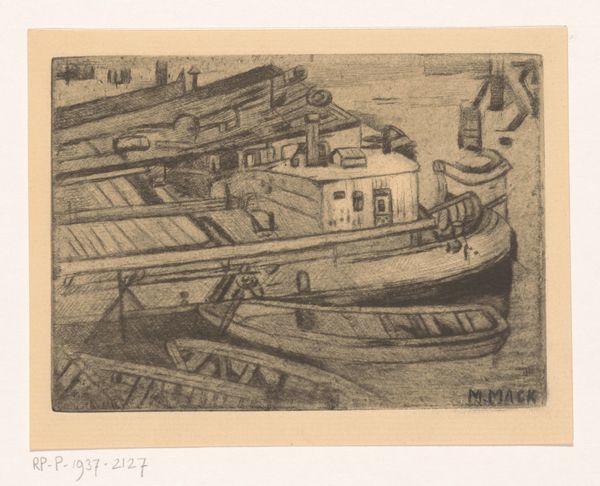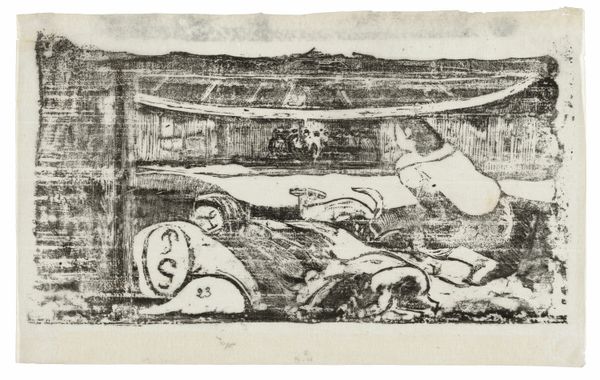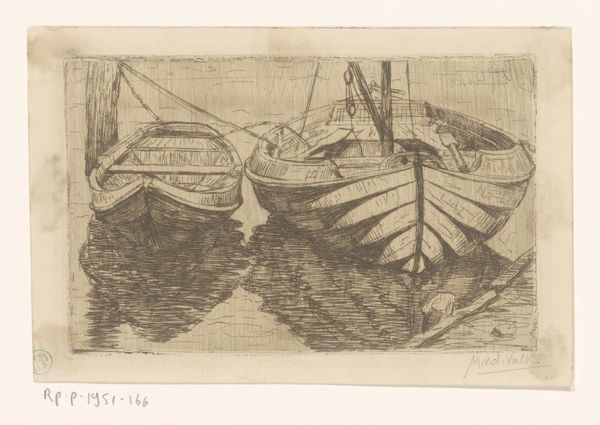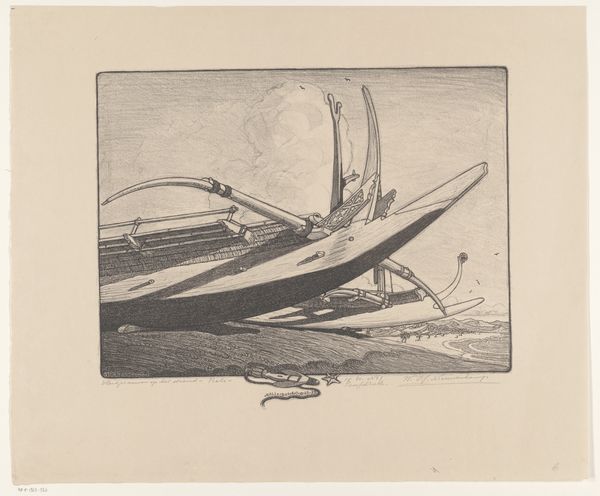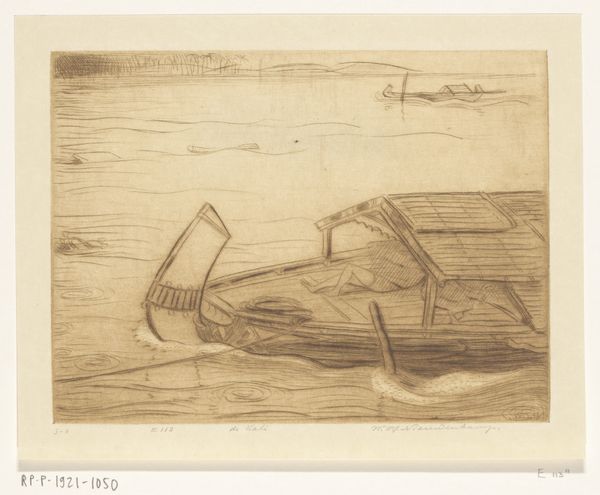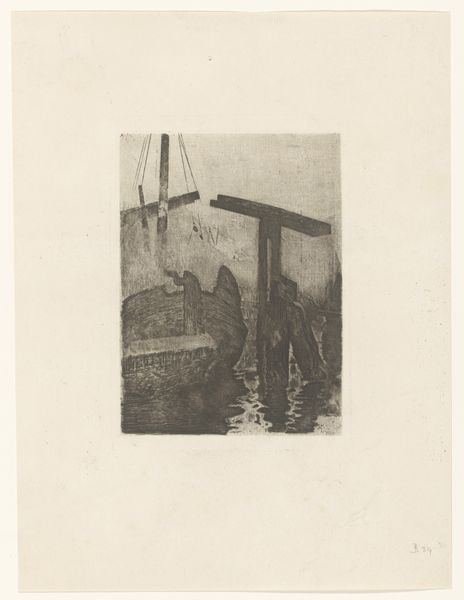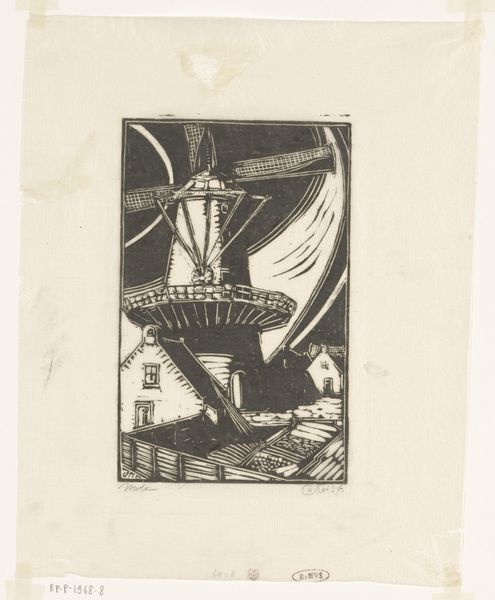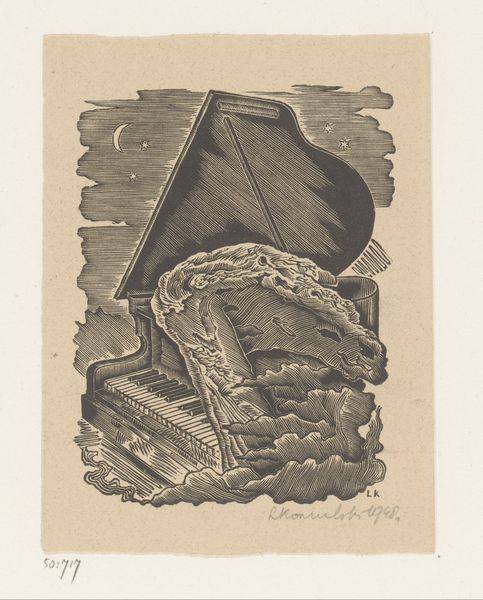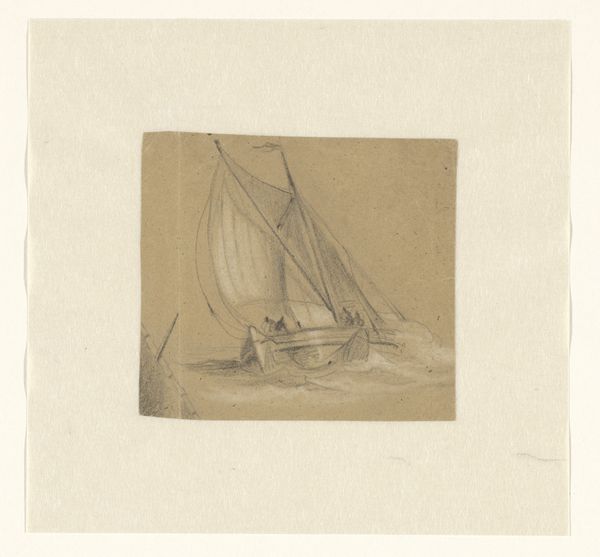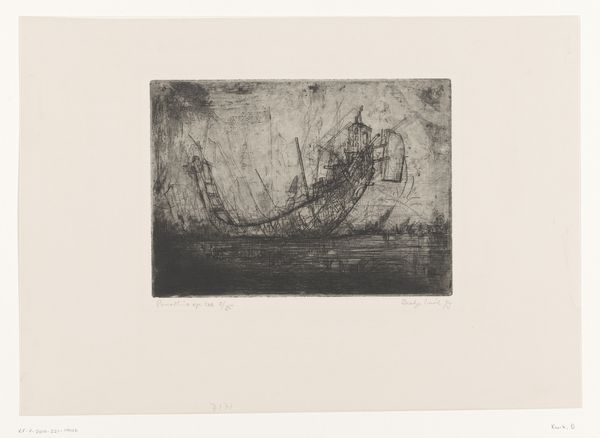
print, woodcut
#
dutch-golden-age
# print
#
landscape
#
figuration
#
geometric
#
woodcut
#
realism
Dimensions: height 144 mm, width 194 mm
Copyright: Rijks Museum: Open Domain
Editor: This is "Gondels," a woodcut print by Reinier Willem Petrus de Vries, created sometime between 1884 and 1952. I find the stark contrast between the black boats and the white water really striking. It feels both peaceful and a little unsettling. What do you see in this piece? Curator: Beyond the obvious aesthetic appeal, I see a dialogue with history. These gondolas, symbols of Venice, become vessels laden with meaning when considered through a post-colonial lens. How might we interpret these leisure crafts, often associated with wealth and tourism, in relation to the socio-economic realities of Venice itself, and the labor that sustains it? Editor: That's a fascinating point. I hadn't considered the labor aspect. It makes me think about the people who built and maintain these boats. Curator: Exactly. Consider the artist's choice of woodcut, a traditionally "humble" medium. Could this be a deliberate commentary on the often-unacknowledged work behind the idealized image of Venice? Does it invite us to think about who is included, and who is excluded, from this romantic vision? Editor: I see what you mean. The roughness of the woodcut contrasts sharply with the refined image of Venice. Curator: It creates a tension, doesn't it? A tension between surface and depth, privilege and labor. Art becomes a critical tool to deconstruct narratives that often go unquestioned. Editor: So, you're saying it is a reminder that art can both reflect and critique society at the same time. Curator: Precisely. By prompting reflection, art can instigate meaningful dialogue and hopefully positive transformation in the world we all share. Editor: That really broadens my understanding of the work. Thanks! I'll never see gondolas the same way again. Curator: And that is the beauty of art; the more you look, the more it tells you.
Comments
No comments
Be the first to comment and join the conversation on the ultimate creative platform.

